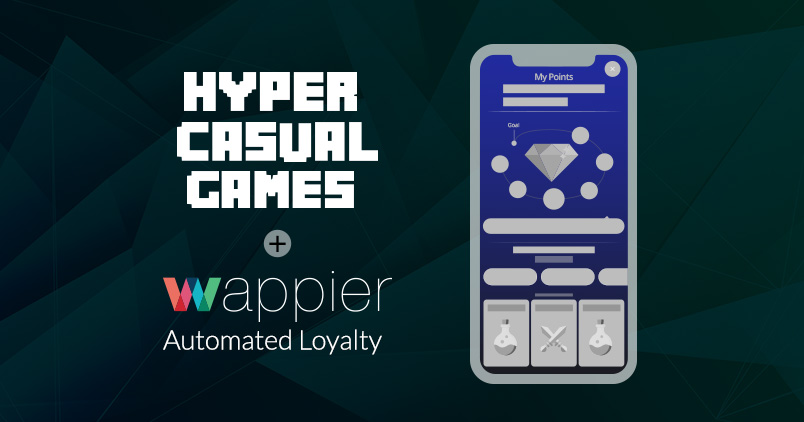As the market gets more crowded and margins get thinner, loyalty programs can help hyper-casual portfolios continue to thrive.

For all its recent success, the hyper-casual games market is facing a new challenge: saturation.
The proliferation of new titles has increased UA costs and reduced margins. Now more than ever, developers need to start leveraging any and all proven strategies from the industry at large to keep their efforts net-positive. If history is any indication, one opportunity promises greater returns than any other for hyper-casual publishers: loyalty programs. Here’s why.
Retention Is King
Hyper-casual games live and die by their retention numbers. Multiple publishing and monetization experts have cited retention as the key leading indicator as to whether or not a title is worth investment, making it the first to be scrutinized. In his thoughtful analysis of Voodoo’s production methodology, free-to-play consultant Tom Kinniburgh explains how “Each game needs 50%+ D1 retention to even make the cut. This creates a very competitive environment where stats and data become the key to becoming picked up by these top publishers.” This is due largely to the fact that retention is directly correlated to the number of paid ad impressions that can be served to the average user. Poorly retained users are shown fewer ads, and revenue drops.
Today, the standard approach to combating hyper-casual churn is to use cross-promotional ad placements to cultivate a portfolio-wide network effect. As churn becomes increasingly likely, publishers expose players to ads for other titles in their portfolio in hopes of restarting the clock and buying themselves more time for monetization.
It’s a strategy perhaps best articulated by Tenjin CEO Chris Farm in an article for PocketGamer.biz, where he describes how “Value moves from one node in the network to another, increasing the studio’s overall visibility in store ranks, and driving more organic downloads. As long as active users remain engaged and have new content to experience, the studio’s portfolio will be continuously sustained.” This approach, however effective, typically involves a trade-off of paid impressions for cross-promotional ones.
Improve average retention, however, and you reduce the necessary frequency of cross-promotions, allowing for more paid ad impressions. Even a 5% portfolio-wide increase in average retention can lead to a 30-100% increase in revenue. In this way, a properly placed loyalty program can be said to pay literal dividends.
There are some loyalty best practices that are universally applicable across all kinds of mobile games, but hyper-casual games are nothing if not unique. Developers hoping to extract the greatest possible value from their efforts should allocate time for tailoring loyalty programs to their particular engagement model, and that starts with user segmentation.

There’s obviously no limit to how granular developers can get with their retention efforts, but in our experience, the most immediate ROI comes from a 2 segment approach. In general, it starts with tracking behavior to quickly identify each user’s affinity for either ad or IAP-based monetization. This is obviously simplified when working with titles that don’t offer IAPs, but those that do should watch for early indicators like multiple visits to your in-app storefront or early purchases of cosmetic upgrades, be it with either soft or hard currency. Knowing how and when to move users into specific segments is less art and more science, and machine learning algorithms (like the ones that power our automated loyalty programs) can help.
Once bucketed, rewards and loyalty milestones should be tailored to each segment’s unique progression path and preferred method of engagement. Those tending more towards ad-based monetization, i.e. showing little interest in IAPs, should receive programs that reward consistent gameplay and rewarded ad engagement (where applicable) with mechanical upgrades, soft currency, and increased earning power. Those with an appetite for IAPs should be set on a path of hard currency rewards, cosmetic upgrades, and admission into VIP programs. By laying out personalized aspirational goals early on in their lifecycle, developers can better illustrate the value offered by long term engagement, thereby increasing retention.

Hyper-Casual Loyalty In Action
We’ve seen firsthand the impact that automated loyalty can have on ad-supported mobile titles, most recently in the case of FANANEES 2 by MBC Group. After the title’s initial post-launch gold rush that saw nearly 2 million organic downloads, it quickly became apparent that the title would need higher retention and engagement numbers if it was going to remain a viable long-term contributor to the company’s portfolio. MBC Group integrated our automated loyalty and retention system, providing players with a fully on-brand experience that offered personalized gameplay rewards for increased engagement.
The program went on to produce a 56% increase in day 1 retention, 36% more average sessions per DAU, and a 58% higher average session length. This quickly translated into higher monetization performance, resulting in 113% more ad views per player and 93% more ad revenue per player.
As MBC’s Head of Mobile Products, Amin El Husseini puts it “wappier’s Loyalty Solution helped us boost our game’s retention, engagement, and revenue KPIs. It gave our players an extra gameplay overlay, and a reason to play our game more often, resulting in a doubling of ad revenue.”
Get Started With wappier
The hyper-casual space may be getting more crowded, but there’s no shortage of opportunities for those willing to continue innovating.
wappier’s Loyalty Programs offer a powerful differentiator when it comes to hyper-casual portfolio performance. To learn more about how we can help, click the button below to get in touch and schedule a demo.






